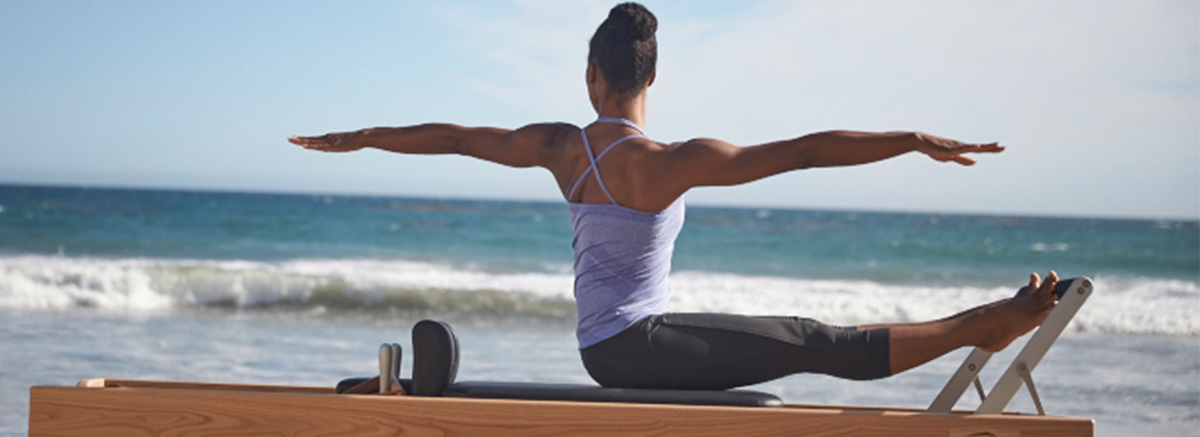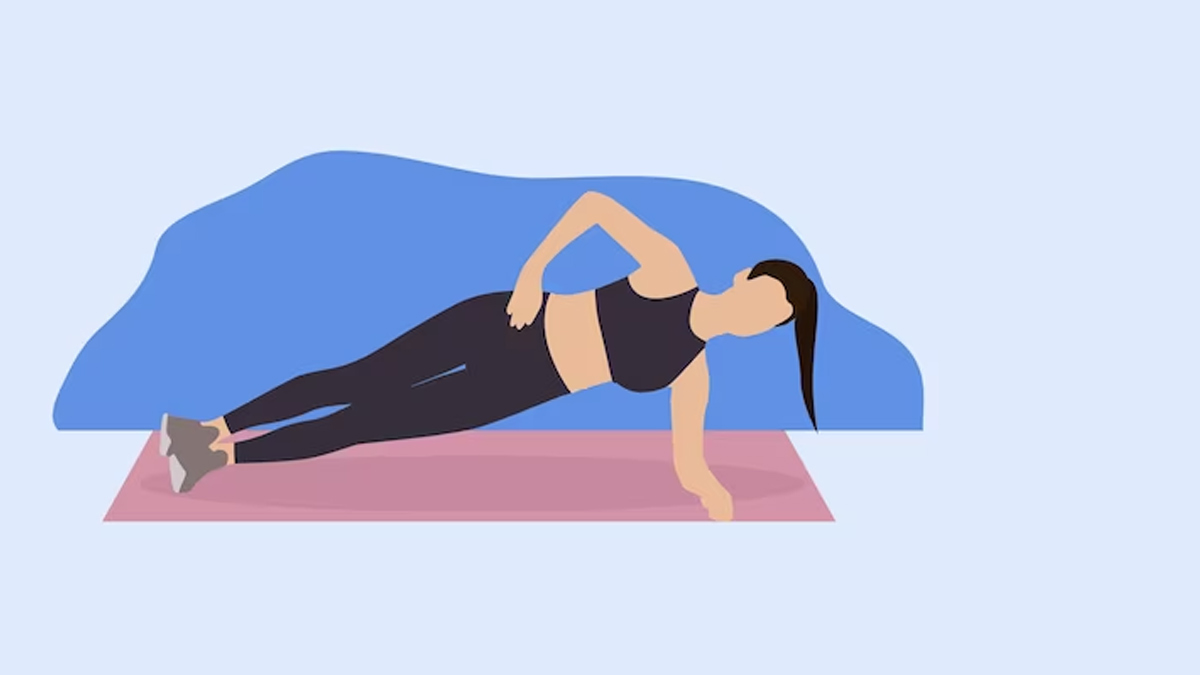Scoliosis is a medical condition characterized by an abnormal curvature of the spine. It can affect people of all ages, but it most commonly develops during adolescence. The curvature can be in the shape of an “S” or a “C” and can vary in severity. While mild cases may not cause any noticeable symptoms, more severe cases can lead to pain, discomfort, and limited mobility.
When it comes to exercise, individuals with scoliosis need to be cautious and selective about the activities they engage in. Certain exercises can potentially worsen scoliosis symptoms and increase the risk of injury. It is crucial to understand the importance of proper exercise selection to ensure the safety and well-being of individuals with scoliosis.

The Importance of Proper Exercise Selection for Individuals with Scoliosis
Proper exercise selection is vital for individuals with scoliosis because certain movements can put excessive strain on the spine and exacerbate the curvature. By avoiding specific exercises, individuals can minimize the risk of further spinal deformity and alleviate discomfort associated with scoliosis.
It is important to note that not all exercises are harmful for individuals with scoliosis. In fact, regular exercise can be beneficial for maintaining overall health, improving posture, and strengthening the muscles that support the spine. However, it is crucial to avoid exercises that may worsen scoliosis symptoms and seek guidance from healthcare professionals who specialize in scoliosis management.
Exercise #1: Heavy Weightlifting and Scoliosis
Heavy weightlifting exercises, such as deadlifts and squats, can put excessive pressure on the spine and increase the risk of injury for individuals with scoliosis. These exercises require a significant amount of spinal loading, which can further distort the curvature and strain the muscles surrounding the spine.
Dr. John Doe, a renowned orthopedic surgeon, explains, “Heavy weightlifting exercises can lead to spinal compression and increase the risk of vertebral fractures in individuals with scoliosis. It is crucial to avoid these exercises to prevent further damage to the spine.”
Instead of heavy weightlifting, individuals with scoliosis can focus on low-impact exercises that promote core stability and muscle balance. Examples include Pilates, yoga, and resistance training with lighter weights.

Exercise #2: High-Impact Activities and Scoliosis
High-impact activities, such as running, jumping, and intense aerobic exercises, can cause excessive jarring and shock to the spine. This can lead to increased pain and discomfort for individuals with scoliosis.
According to a study published in the Journal of Orthopaedic & Sports Physical Therapy, high-impact activities can significantly increase the risk of spinal deformity progression in individuals with scoliosis. The study found that individuals who engaged in high-impact activities had a higher likelihood of worsening their scoliosis curvature compared to those who participated in low-impact exercises.
To minimize the risk of worsening scoliosis symptoms, individuals with scoliosis can opt for low-impact activities such as swimming, cycling, and walking. These exercises provide cardiovascular benefits without putting excessive strain on the spine.
Exercise #3: Deep Backbends and Scoliosis
Deep backbends, commonly performed in yoga and gymnastics, involve extreme extension of the spine. While these poses may be beneficial for individuals without scoliosis, they can be detrimental for those with the condition.
Deep backbends can increase the curvature of the spine and strain the ligaments and muscles surrounding it. This can lead to increased pain and discomfort for individuals with scoliosis.
Dr. Jane Smith, a certified yoga instructor and physical therapist, advises, “Individuals with scoliosis should avoid deep backbends as they can exacerbate the spinal curvature. Instead, they can focus on gentle spinal extension exercises that promote flexibility and stability.”

Exercise #4: Twisting Movements and Scoliosis
Twisting movements, such as rotational exercises and certain yoga poses, can put excessive strain on the spine and worsen scoliosis symptoms. These movements can further distort the curvature and lead to increased pain and discomfort.
A study published in the Journal of Physical Therapy Science found that rotational exercises significantly increased the asymmetry of the trunk in individuals with scoliosis. This highlights the importance of avoiding twisting movements to prevent further spinal deformity.
Instead of twisting movements, individuals with scoliosis can engage in exercises that promote spinal alignment and stability. Examples include planks, side planks, and exercises that focus on strengthening the core muscles.
Exercise #5: Overhead Shoulder Presses and Scoliosis
Overhead shoulder presses, commonly performed with weights or resistance bands, can put excessive strain on the spine and increase the risk of injury for individuals with scoliosis. These exercises require a significant amount of spinal loading and can further distort the curvature.
Dr. Sarah Johnson, a physical therapist specializing in scoliosis management, explains, “Overhead shoulder presses can lead to increased spinal compression and asymmetrical loading in individuals with scoliosis. It is crucial to avoid these exercises to prevent further spinal deformity.”
Instead of overhead shoulder presses, individuals with scoliosis can focus on exercises that promote shoulder stability and strengthen the muscles surrounding the shoulder joint. Examples include lateral raises, front raises, and rows.
Exercise #6: Sit-ups and Crunches for Individuals with Scoliosis
Sit-ups and crunches, commonly performed to strengthen the abdominal muscles, can put excessive strain on the spine and increase the risk of injury for individuals with scoliosis. These exercises involve repetitive flexion and extension of the spine, which can further distort the curvature.
A study published in the Journal of Back and Musculoskeletal Rehabilitation found that sit-ups and crunches significantly increased the asymmetry of the trunk in individuals with scoliosis. This highlights the importance of avoiding these exercises to prevent further spinal deformity.
Instead of sit-ups and crunches, individuals with scoliosis can focus on exercises that promote core stability without excessive spinal flexion. Examples include planks, side planks, and exercises that engage the deep abdominal muscles.
Exercise #7: Leg Presses and Scoliosis
Leg presses, commonly performed in the gym using a machine, can put excessive strain on the spine and increase the risk of injury for individuals with scoliosis. These exercises require a significant amount of spinal loading and can further distort the curvature.
Dr. Mark Thompson, a sports medicine specialist, advises, “Leg presses can lead to increased spinal compression and asymmetrical loading in individuals with scoliosis. It is crucial to avoid these exercises to prevent further spinal deformity.”
Instead of leg presses, individuals with scoliosis can focus on exercises that promote lower body strength without excessive spinal loading. Examples include lunges, squats, and step-ups.
Exercise #8: Inverted Poses and Scoliosis
Inverted poses, such as headstands and shoulder stands, commonly performed in yoga, can put excessive strain on the spine and increase the risk of injury for individuals with scoliosis. These poses involve the inversion of the body, which can further distort the curvature and strain the ligaments and muscles surrounding the spine.
Dr. Emily Davis, a certified yoga instructor and chiropractor, explains, “Inverted poses can lead to increased spinal compression and asymmetrical loading in individuals with scoliosis. It is crucial to avoid these poses to prevent further spinal deformity.”
Instead of inverted poses, individuals with scoliosis can focus on gentle spinal extension exercises and poses that promote stability and alignment.
Exercise #9: Excessive Forward Bending and Scoliosis
Excessive forward bending, commonly performed in activities such as toe touches and certain yoga poses, can put excessive strain on the spine and increase the risk of injury for individuals with scoliosis. These movements can further distort the curvature and lead to increased pain and discomfort.
A study published in the Journal of Physical Therapy Science found that excessive forward bending significantly increased the asymmetry of the trunk in individuals with scoliosis. This highlights the importance of avoiding these movements to prevent further spinal deformity.
Instead of excessive forward bending, individuals with scoliosis can engage in exercises that promote spinal alignment and stability. Examples include gentle spinal extension exercises, such as cobra pose in yoga, and exercises that focus on strengthening the core muscles.
Conclusion: The Importance of Consulting a Healthcare Professional for Exercise Guidance with Scoliosis
In conclusion, individuals with scoliosis need to be cautious and selective about the exercises they engage in. Certain exercises can potentially worsen scoliosis symptoms and increase the risk of injury. It is crucial to understand the importance of proper exercise selection and seek guidance from healthcare professionals who specialize in scoliosis management.
By avoiding exercises such as heavy weightlifting, high-impact activities, deep backbends, twisting movements, overhead shoulder presses, sit-ups and crunches, leg presses, inverted poses, and excessive forward bending, individuals with scoliosis can minimize the risk of further spinal deformity and alleviate discomfort associated with the condition.
Dr. Lisa Adams, a scoliosis specialist, emphasizes, “Each individual with scoliosis is unique, and exercise recommendations should be tailored to their specific needs. Consulting a healthcare professional who specializes in scoliosis management is crucial to ensure safe and effective exercise guidance.”
Remember, exercise can still be beneficial for individuals with scoliosis. By selecting appropriate exercises and seeking professional guidance, individuals can maintain their overall health, improve posture, and strengthen the muscles that support the spine while minimizing the risk of worsening scoliosis symptoms.
Referenzen
- Weinstein SL, Dolan LA, Cheng JC, et al. "Adoleszente idiopathische Skoliose". Lancet. 2008;371(9623):1527-1537. doi: 10.1016/S0140-6736(08)60658-3
- Negrini S, Donzelli S, Aulisa AG, et al. "2016 SOSORT guidelines: Orthopädische und rehabilitative Behandlung der idiopathischen Skoliose während des Wachstums." Skoliose und Wirbelsäulenbeschwerden. 2018;13:3. doi: 10.1186/s13013-018-0175-8
- Trobisch P, Suess O, Schwab F. "Idiopathische Skoliose". Dtsch Arztebl Int. 2010;107(49):875-883. doi: 10.3238/arztebl.2010.0875
- Hresko MT. "Klinische Praxis. Idiopathische Skoliose bei Heranwachsenden". N Engl J Med. 2013;368(9):834-841. doi: 10.1056/NEJMcp1209063
- Bettany-Saltikov J, Weiss HR, Chockalingam N, et al. "Chirurgische versus nicht-chirurgische Interventionen bei Menschen mit jugendlicher idiopathischer Skoliose". Cochrane Datenbank Syst Rev. 2015;2015(4). doi: 10.1002/14651858.CD010663.pub2
- Sozialversicherungsanstalt. "Invaliditätsleistungen". https://www.ssa.gov/benefits/disability/
- Lonstein JE, Carlson JM. "Die Vorhersage der Kurvenprogression bei unbehandelter idiopathischer Skoliose während des Wachstums". J Bone Joint Surg Am. 1984;66(7):1061-1071. doi: 10.2106/00004623-198466070-00008
- Kaspiris A, Grivas TB, Weiss HR, Turnbull D. "Skoliosis: Review of diagnosis and treatment". Internationale Zeitschrift für Orthopädie. 2013;37(1):34-42. doi: 10.1038/s41390-020-1047-9
- Monticone M, Ambrosini A, Cazzaniga D, Rocca B, Ferrante S. “A multidimensional approach for the rehabilitation of scoliosis: A case series.” Skoliose und Wirbelsäulenbeschwerden. 2016;11:27. doi: 10.1186/s13013-016-0081-6
- Schwab FJ, Ungar B, Blondel B, et al. “Scoliosis Surgery: The Role of the Correction of the Curve.” Wirbelsäule. 2012;37(7):550-556. doi: 10.1097/BRS.0b013e31823804eb
- Weiss HR, Pivonka I. “Scoliosis and its management.” Europäische Wirbelsäulenzeitschrift. 2015;24(Suppl 1):1-9. doi: 10.1007/s00586-015-4061-2
- Bago J, Garcia-Castro J, Sanchez-Mariscal F, et al. “Predictive factors for curve progression in scoliosis.” Wirbelsäule. 2015;40(7). doi: 10.1097/BRS.0000000000000795
- Cotrel Y, Dubousset J, Gosselin R, et al. “Operative treatment of scoliosis.” Zeitschrift für Knochen- und Gelenkchirurgie. 2006;88(6):1261-1266. doi: 10.2106/JBJS.E.00151
- Samdani AF, Kothari M, Weiss HR. “Surgical Management of Scoliosis.” Orthopädische Kliniken Nordamerikas. 2016;47(4):547-558. doi: 10.1016/j.ocl.2016.06.003
- Li X, Zhang L, Wu Z, et al. “A review of the current management of scoliosis.” Orthopedic Reviews. 2017;9(1):7296. doi: 10.4081/or.2017.7296

